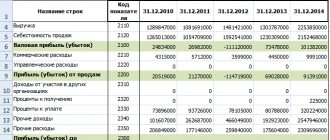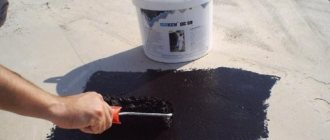There are universal building materials for general consumption, for which the demand never dries up. And the chain-link mesh is a vivid example of this.
The demand for chain-link mesh, despite the seasonality, is quite high and stable. Another important advantage of organizing a mesh production business is that you don’t need large capital investments to start, the production machines are quite compact, the finished mesh is rolled into rolls, so this business will not require large production areas. To open a mini-workshop for the production of chain-link mesh you will need about 300,000 rubles. But let’s look at the organizational aspects step by step.
Demand analysis and market assessment of chain-link mesh
According to consumption estimates, about 90% of all manufactured mesh is used for arranging fences and other barriers at construction sites, personal gardens and summer cottages, and making enclosures for birds and animals. The remaining 10% is occupied by various needs of construction, agriculture, mechanical engineering, energy (reinforcement during plastering work, sifting crushed rocks and building materials, strengthening slopes from embankments, manufacturing protective screens for ventilation shafts, protecting heating mains and pipelines, etc.).
The price of the mesh and its use depends on the following factors:
- cell sizes;
- material for manufacturing (ferrous, galvanized metal, polymer coatings, stainless steel);
- wire thickness;
- roll sizes.
Before starting production, you should assess the demand for chain-link mesh in your region: take into account the quantity, approximate sales volumes, assortment (and the most popular items) of competitors, analyze existing offers and prices at wholesale construction sites and retail stores.
The main channels for the sale of chain-link mesh (finished products):
1) Independent implementation . The final consumer is individuals.
Pros: ability to set a maximum markup.
Cons: advertising costs, space for a store or showroom, transportation costs (delivery).
2) Retail stores (construction, hardware). Targeted at summer residents, owners of country houses, private construction. The final consumer is individuals.
Pros: when concluding a sales agreement with a chain of retail stores, you can achieve relatively constant sales of products.
Disadvantages: high store markup (about 30%), high competition, small volumes, sales dependent on many unpredictable factors (recommendations of the seller, location of the product on the shelf, attractive appearance);
3) Wholesale centers (companies selling various metal products). Focused on large orders, construction companies, industrial enterprises, retail chains. The end consumer is legal entities of all forms of ownership, private entrepreneurs.
Pros: large volumes, time saving (no need to go shopping, negotiate, sign agreements, etc.).
Cons: high competition, large but irregular, mostly seasonal sales, which can be described in one phrase: “rarely, but accurately.”
4) Direct sales to industrial enterprises (participation in tenders)
Pros: ability to work “to order”, guaranteed level of sales. Products are not stored in the warehouse, they are paid according to the contract, without vague deadlines for implementation.
Cons: for a “newbie” in business, winning a tender on favorable terms is almost impossible.
Of course, in theory, the best option would be to work out all the channels, but in practice, such a volume of work is impossible to accomplish in a short period of time. Therefore, the general recommendation is to start with retail sales, while simultaneously searching for alternative options and developing your own customer base.
Studying the market
Let's start with the simplest. First, you need to visit the nearest construction stores and markets to determine the range of products that interest us and are sold in your region. You can look at the information posted in local newspapers, which will also allow you to form a definite opinion about the true picture of what is happening.
If you already have a clear idea of the cost of the mesh and the needs of consumers (i.e., which varieties of the mentioned products are in greatest demand among buyers), then you have studied the market very successfully. All that remains is to determine the volume of planned production, in order to produce the maximum quantity of this product that will be successfully sold.
Now your task is to determine the directions of supply of mesh and find potential partners to whom you will sell your products, as well as to study in detail the market capacity. It is important to know exactly about the needs of buyers for the specified product at the moment and their changes in the near future in order to successfully implement business ideas in the field of production. Explore the area where you plan to deliver your products. You should immediately decide on the place of delivery of the goods and enter into an agreement with your partners to carry out such events.
Choosing an organizational form and other legal issues
To open a mini-workshop, the optimal organizational form is an individual entrepreneur (IP). OKVED 28.73 – “Production of wire products.” But the choice of taxation system depends on your target audience of buyers. If the end consumer is private individuals, it will be most beneficial to choose a simplified taxation system. Enterprises prefer to cooperate with legal entities or individual entrepreneurs who pay VAT.
For the business plan, we will take into account taxation according to the simplified tax system – 15%. The tax base is income minus expenses (of course, all financial transactions for calculating taxes must be documented and correctly executed).
The production of chain-link mesh is regulated by GOST 5336-80. According to current legislation, manufacturers are not required to confirm the quality of their products with an appropriate certificate. But in practice, passing voluntary certification and complying with GOST requirements during production significantly increases the chances of running a successful business.
Organizational plan
Mesh making is suitable for both beginners and experienced entrepreneurs. To organize production, it is not necessary to choose a large workshop. Minimum initial capital is another advantage of such a project. At first, the profit will be small, but then the volume of income can be easily increased.
The stage of selecting premises for placing machines is allocated separately. In this case, there are no special requirements for the workshop. You can choose warehouses and any other non-residential premises. The main thing is to ensure that all necessary communications are available.
Small volumes of materials are supplied to construction markets or direct clients. It is better to place advertisements in newspapers and magazines for this purpose. Delivery to the destination requires the separate purchase of a cargo vehicle.
Business registration
To start work, the entrepreneur chooses the status of individual entrepreneur or LLC. The best option is to work according to the traditional taxation scheme. After all, buyers are often companies that are VAT taxpayers.
To register, a certain package of documentation is submitted to the tax service. To open a business you will need the following documents:
- Minutes of the meeting of founders.
- Charter in two copies.
- Application on form P11001.
- If necessary, a decision to create a limited liability company.
- Letter of guarantee from the landlord.
- Receipt for payment of state duty in the amount of up to 800 rubles.
If the status is individual entrepreneur, the list of documents is more modest.
- Copy of the passport.
- Application form P21001.
- Receipt for state duty in the amount of 800 rubles.
Opening a current account along with finding suitable premises becomes the next step after all issues with the documents have been resolved.
Rent of production premises
An oversized room is enough to accommodate production. If, to begin with, only one machine will work, a simple garage or other facility occupying 15 square meters or more will suffice. From 50 square meters will be required for those who have more serious plans. Up to 30-40 square meters are required to organize a warehouse where raw materials, blanks, and finished products are stored.
You can easily find a suitable location in industrial zones of any region. It is better to contact market participants outside the city, then the rent will be cheaper. Additionally, it is recommended to consider such an issue as entry into the territory for counterparties. Be sure to take into account the dimensions characteristic of the product in a particular case. 15 thousand rubles per month is the approximate cost of renting industrial premises on the outskirts of a medium-sized city, in a special zone.
Purchase of raw materials
The main raw material in production is wire, which is based on the following several materials:
- With polymer coating.
- Made from stainless steel.
- Made from low carbon steel.
- Galvanized.
Finished products must remain resistant to aggressive environmental influences, since they are often used and placed outdoors. Therefore, we always try to choose materials with additional protection against corrosion.
Stainless steel mesh has the highest cost. Such products are often purchased to order and are very rarely mass produced. Galvanized steel is considered the best option under any conditions. But the appearance will be preserved for a long time only for products for which the hot processing method was used. The service life in this case will also be maximum. Electrolytic galvanizing is a new method, but it does not provide any exact guarantees.
The material for the production of chain-link mesh is purchased at metal rolling shops in any city. For the first purchase, it is enough to spend 20 thousand rubles to purchase 500 kilograms of raw materials.
Formation of staff
The volume of production determines how many employees there will be at the facility. 1-2 people with a salary of up to 30 thousand rubles per month are enough for small facilities that have just opened. There are no special requirements for future subordinates, since the production process itself is not particularly complicated.
Equipment for the production of chain-link mesh and a room for a mini-workshop
The main expense of organizing the production of chain-link is the purchase of machines that produce the mesh. There are many types and manufacturers (on the Internet you can even find instructions on how to assemble a machine yourself from “off-hand” parts). We will not delve into the delights of folk craftsmen, so we will consider two main industrial options: semi-automatic and fully automated machines.
Semi-automatic - require the participation of an operator who controls the mesh manufacturing process. Advantages: small size, ease of setup and operation, low cost (35,000 - 40,000 rubles). The main disadvantage: despite the partial automation of the process, a lot has to be done manually, incl. and bending of the mesh, which allows for a certain asymmetry in cell sizes and other minor imperfections.
Automatic - provide a fully streamlined production process that does not require outside intervention.
Advantages: high productivity, precision weaving, quick bending and minimal operator intervention (load the reel, remove the finished roll).
Disadvantages: higher price compared to semi-automatic (from 200,000 rubles), cost of repair and maintenance, need for special training of personnel.
To calculate the business plan, it is planned to purchase an automatic machine ACP15/2 worth 250,000 rubles. in the following configuration: machine, unwinding device, 2 sets of equipment (screw bushing, winding plate, receiving pipe), passport, operating instructions. The machine produces mesh in accordance with GOST 5336-80 in a wide range of cell sizes (20-60 mm). The cost of equipment includes delivery, personnel training and warranty maintenance for a year.
Additional expenses - the purchase of racks for storing finished products, a receiving table, an operator's workplace costing 50,000 rubles.
Total capital investment for opening a mini-workshop: RUB 300,000.
Before purchasing equipment, you need to select premises for production.
To operate one machine, 15 m2 + 10-15 m2 for storing finished products will be enough. The main requirement for the premises is the presence of a 3-phase electrical network.
Permits and documents
Business registration
Select the legal form of the enterprise: LLC or individual entrepreneur. For a novice entrepreneur, an individual entrepreneur is suitable - it’s simple in taxes and registration, it costs only 1,000 rubles. Specify OKVED 25.9 - Production of other finished metal products. The tax system is the simplified tax system at a rate of 6 or 12 percent.
Documents for registration of individual entrepreneurs
- Application for state registration of an individual as an individual entrepreneur (form No. P21001)
- Copy of Russian passport
- Receipt for payment of state duty
Which OKVED code must be specified for the manufacture of chain-link mesh?
When registering any line of business, the application must reflect the code, according to OKVED, of the line in which the entrepreneur will be engaged. To produce chain-link mesh, you will need to specify code 28.73, which corresponds to the production of various wire products. It also includes the production of chain-link.
Which taxation system to choose for the manufacture of chain-link mesh
The best option when establishing this production would be to choose a simplified taxation system. It allows you to choose one of two payment methods:
- tax is paid in the amount of 6% of the income received;
- tax of 15% of net profit, i.e. income minus expenses. This is the best option when making chain-link. But in this case, it is mandatory to provide documents that confirm the expenses incurred by the entrepreneur in the manufacture of this product.
Description of the technological process
The machine performs all work on manufacturing products automatically. The operator is required to: load a spool of wire, program the microprocessor according to certain parameters (wire thickness, cell diameter, roll dimensions) and press start.
The wire from the spool, using an unwinding device and guide bushings, is pulled to the area where the spiral is formed, where it is wound onto an auger (a working mechanism that twists the wire into a spiral for subsequent weaving).
The wound spirals move to the guillotining mechanism, where the wire is cut. One of the ends of the wire is bent in the form of a hook (half the length of the intended cell), the workpiece is pulled through the groove of a continuously rotating shaft and attached to a guillotining device.
The cut spiral is held by grippers, stretching under the influence of a suspended load.
Then, the machine winds the next spiral, interweaving the one that is held by the grippers, forming the cells of the chain-link mesh. After cutting the newly formed spiral, the grippers release the held wire and the mesh is wound into a roll of the programmed length.
The mesh is processed with machine oil, the edges are packed in thick paper and the finished rolls are compactly folded into the designated storage space.
Types of mesh fences
Chain-link tension fence
Chain-link fencing can be sectional or tensioned. The first option involves the production of rectangular metal sections, inside of which a mesh is fixed. For sections, metal corners, profile and round pipes of small diameter are used. They are connected by welding or bolts if there is no welding machine. This type of fence looks more aesthetically pleasing and attractive; the metal frame prevents the mesh from sagging.
Sectional chain-link fence
A tension fence is quicker and easier to install; its design consists only of support pillars and the mesh itself. The mesh is secured using steel wire, clamps, or hung on hooks welded to the posts. Pipes of different diameters, concrete pillars, and wooden beams are suitable for pillars.
Calculation of a business plan for the production of chain-link mesh
To calculate the profitability of a business, let’s take as a finished product the most popular mesh for fencing with cell dimensions of 55*55 mm, made of galvanized wire 1.6 mm thick.
Revenue part
Machine productivity (for cell size – 55 mm) – 48 m2/hour. With single-shift work and 22 working days per month, production volumes will be: 48 m2 * 8 hours * 22 days = 8448 m2/month.
The standard mesh roll dimensions are 15 m2 (10 m long, 1.5 m wide). That is, the monthly production volume from one machine will be 563 rolls.
Selling price:
- retail – 650 rub./roll (30% of sales),
- wholesale – 450 rub./roll (70% of sales).
Total income: (169 roll * 650 rub.) + (394 * 450) = 287,150 rub./month.
Cost calculation
The raw material for the production of chain-link mesh is low-carbon wire (according to GOST 3282-74) without coating, galvanized or with a colored decorative polymer coating.
The price per ton of galvanized low-carbon wire with a tensile strength of 560-900 N/mm2 and a diameter of 1.6 mm is 37,000 rubles.
Wire consumption per 1 m2 of chain-link mesh is calculated by the formula: Weight (kg) = (13.40 * D2 /A, where 13.40 kg/mm is a constant coefficient; D - wire diameter in mm; A - cell diameter in mm .
According to this formula, the wire consumption for a chain-link mesh with a mesh size of 55 mm will be equal to: (13.40 * 1.6²) / 55 = 0.62 kg.
Cost of a roll (based on the wire spent) = (weight of wire * number of m2 per roll * cost of mesh) = 0.62 kg * 15 m2 * 37 rubles = 344.10 rubles.
Cost of 563 rolls (productivity per month) = 193,728.30 rubles.
Calculation of income and expenses
Let's calculate the work of our production for a month.
Revenue. The equipment we have chosen can produce 18 rolls of chain-link mesh per day. Thus, per month 18*20=360 rolls. The cost of selling a roll is 500 rubles or 360*500=180,000 rubles.
Expenses. To run a business you need one employee, salary 15,000 rubles, payroll taxes 4,500 rubles. We will run the business in our own garage, so there is no need to spend money on rent, electricity per month is 1,980 rubles, wire consumption is 18 * 20 * 1.5 * 10 * 0.69 = 3,726 kilograms. The cost of wire is 35,000 rubles/ton or 3,726*35=130,410 rubles. Other expenses, including transportation and packaging costs, may amount to 10,000 rubles.
We collect all expenses: 15,000+4,500+1,980+130,410+10,000=161,890 rubles. It turns out that if you sell all the wire produced in a month, your net profit will be 180,000-161,890=18,110 rubles.
Room
Since products can be sold through retail or wholesale networks, the location of the workshop itself is not significant. It is advisable to choose a building so that you do not have to pay too high a rent, but it has all the required communications - electricity (industrial power) and ventilation.
It could even be a garage, and you will be making the mesh almost at home. But it is advisable to find a workshop on the outskirts of the city where there is a good electrical network.
The room size is about 20 square meters. m., since the dimensions of the equipment are not too large. The product itself is stored in a compact form and does not require special conditions. Before starting an activity, representatives of regulatory authorities are invited and they issue permission. It is important to comply with fire safety rules, which will be checked by a State Inspectorate employee.
Where to open a workshop for the production of chain-link mesh?
You can rent premises wherever it is convenient for you, as long as it is not close to competitors. Chainlink production does not have a negative impact on the environment. The premises are subject to standard requirements as for any industrial enterprise.
It is important that it be equipped with electricity, without which mesh production is impossible.
An area of 30-50 square meters is enough. m. The best option would be to rent a room. Some newcomers to this business even set up production in a garage, but in such conditions the production volumes will be small.
Factors influencing the rental price are:
- location,
- square.
You can keep it within 20-40 thousand rubles.









